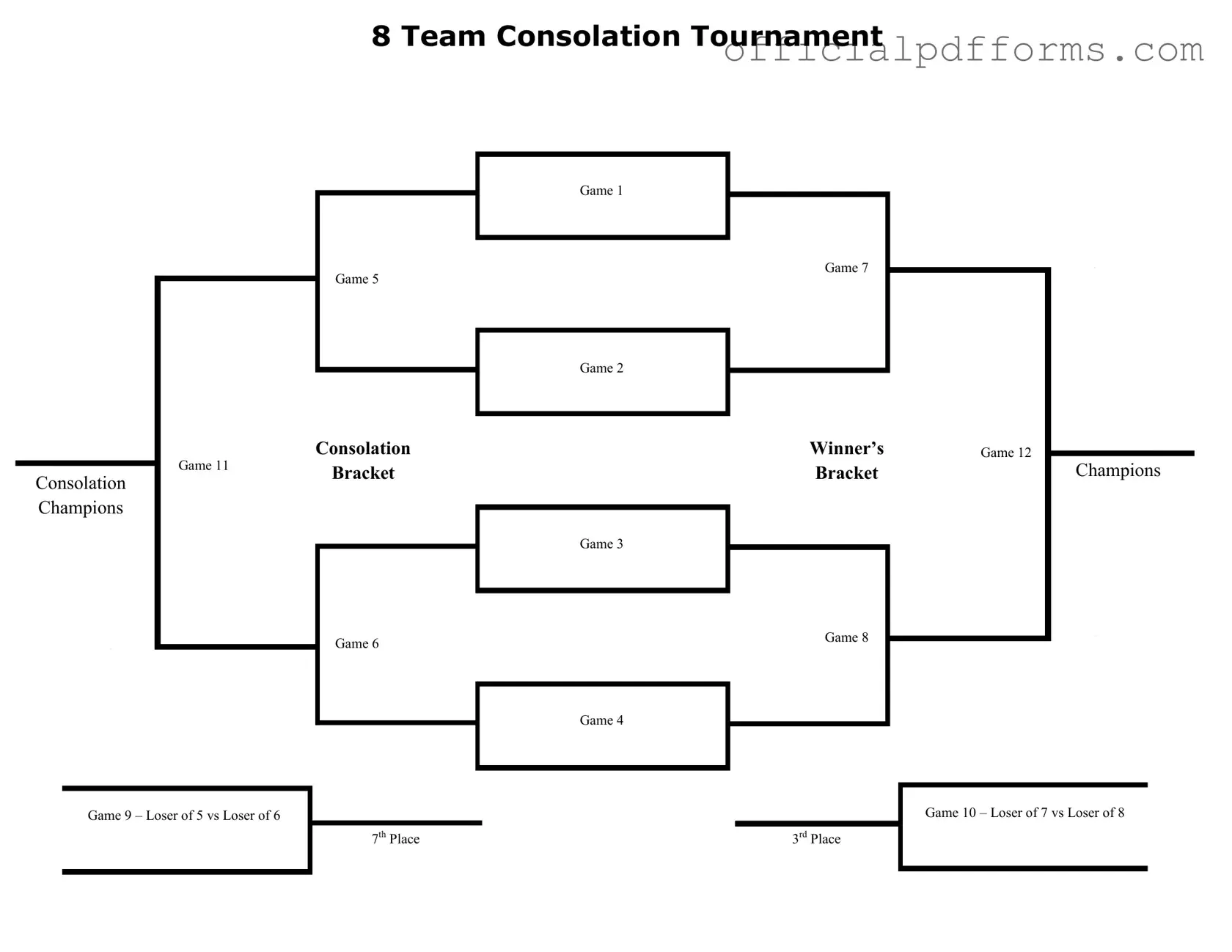Fill in a Valid Tournament Consolation Bracket Form
The Tournament Consolation Bracket form is a tool designed to help organize and track the progress of teams in a consolation tournament. This form outlines the matchups, including games for determining 7th and 3rd place, ensuring a clear path for teams that did not advance to the finals. To get started, fill out the form by clicking the button below.
Access Form Online
